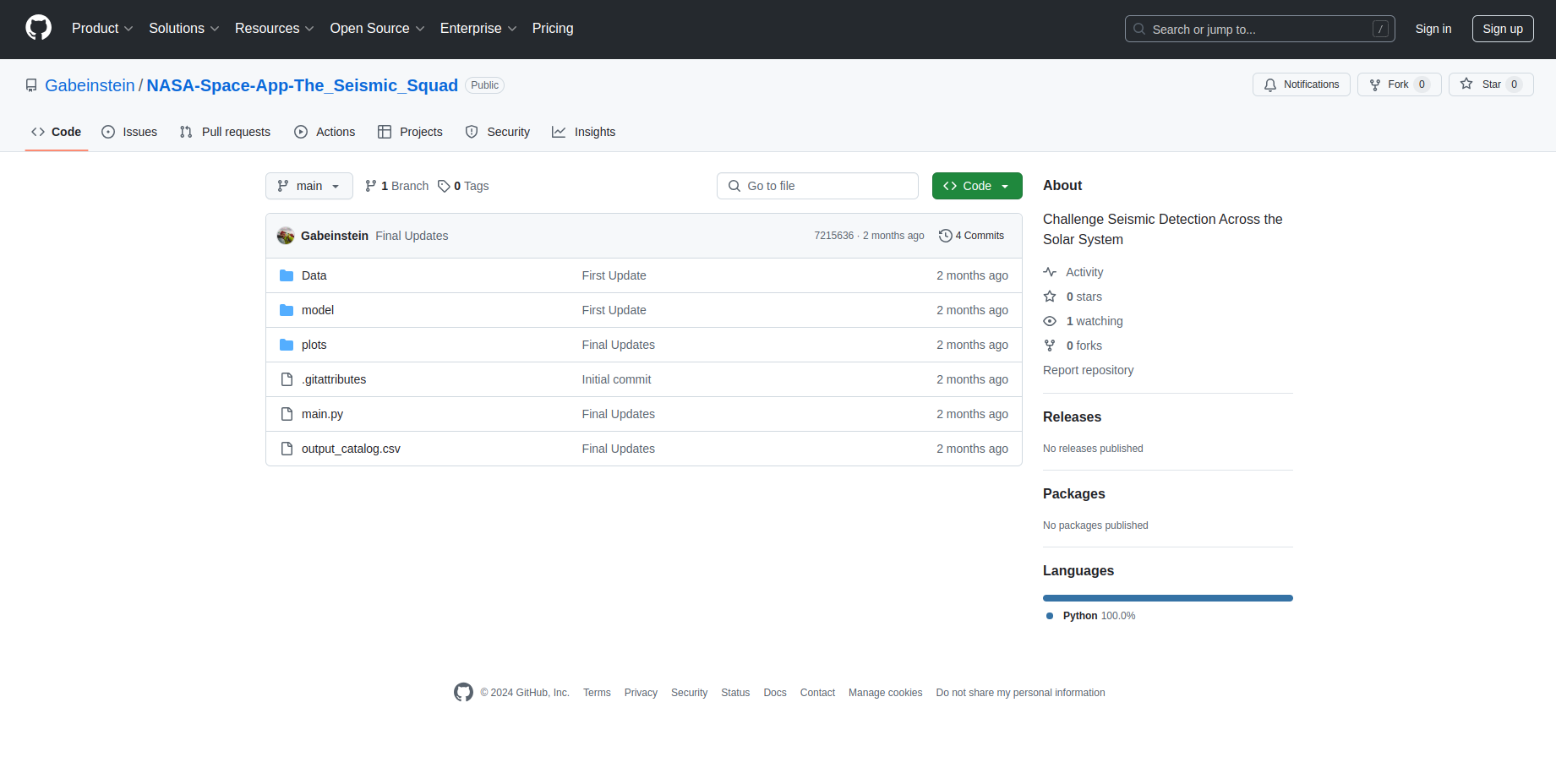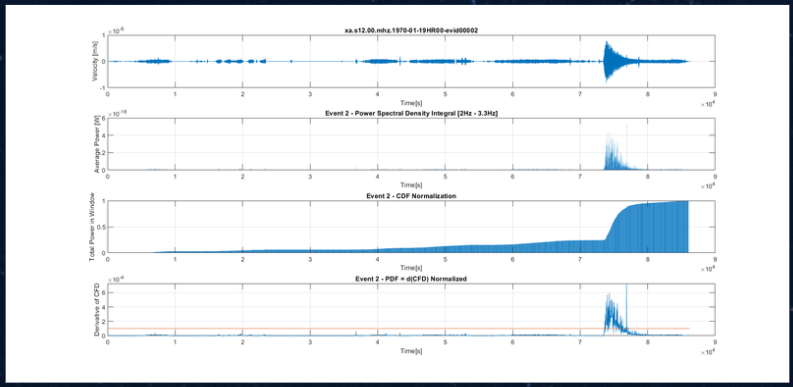NASA International Space Apps Challenge USFQ
Seismic Squad – AESS USFQ
Our project addresses the challenge of seismic detection across celestial bodies by developing an innovative system that analyzes seismic data. For this, we took each seismic file, divide it into segments, and apply Fourier Transform to convert the wave data into the frequency domain. This allows us to calculate the spectral density of potential energy. We focus on a frequency range of 2 Hz to 3.3 Hz, where we discovered that most seismic energy is concentrated. By integrating this spectral density over the specified frequency range, we obtain a value associated with each time interval analyzed. This value is then used to plot time versus power (the integral), enabling us to identify when the wave exhibits the highest power peak, indicating concentrated energy, and thus identifying potential seismic events. Additionally, we create a normalized cumulative distribution from these values, which rapidly increases when a seismic event occurs. To pinpoint when this increase begins, we calculate the derivative of the cumulative function, establishing a threshold that indicates the onset of seismic activity. While the use of Fourier Transform and spectral density analysis is common in seismic studies, our project introduces a novel integration of these methods with detailed temporal segment analysis and the derivative of the cumulative function to detect the onset of seismic events. By focusing specifically on the critical frequency range of 2 Hz to 3.3 Hz, where the majority of seismic energy is concentrated, we provide a targeted approach that enhances traditional methods. Additionally, our development of a normalized cumulative distribution to observe rapid growth in response to seismic events offers a fresh perspective on data analysis that is not widely utilized in existing studies.






